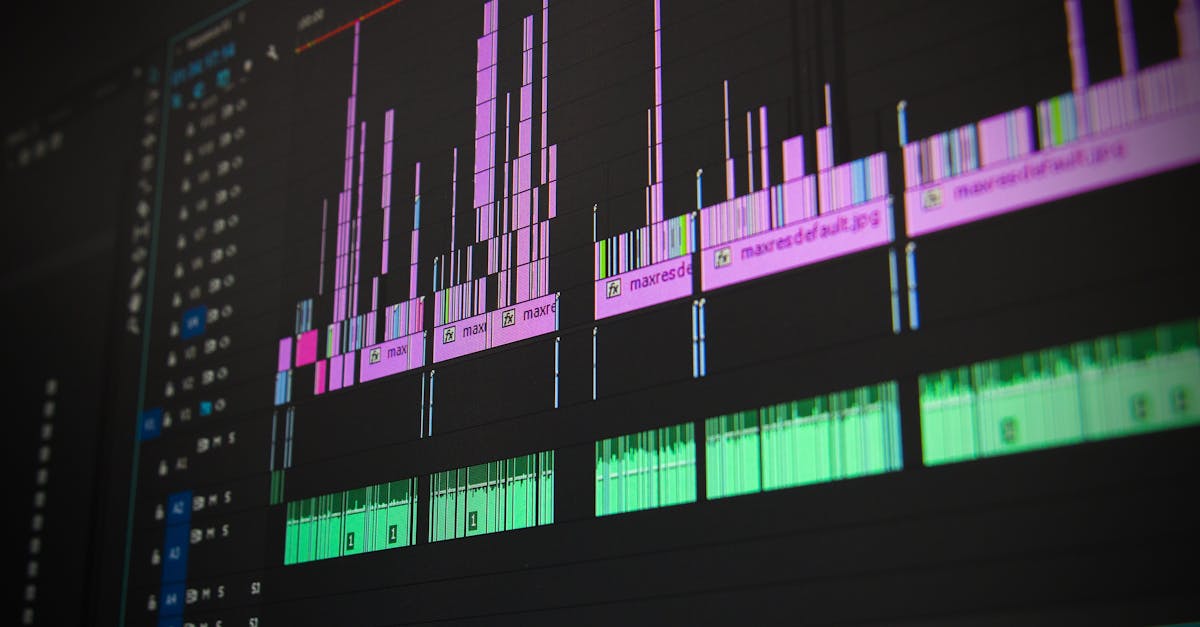
Table Of Contents
Exporting Your Finished Project
Exporting Your finished project is the final step in the video editing process. Once you have completed all the necessary edits and enhancements to your video, it's time to save and export it into a final, shareable format. In Video editing Cambridge, exporting allows you to convert your project into a file that can be easily viewed on various platforms.
When exporting your finished project, consider the intended use and audience of your video. Different platforms may have specific requirements for the format and resolution of videos. Ensure that you choose the appropriate settings during the export process to optimize your video for its intended purpose. Before finalizing the export, preview your video to catch any last-minute errors or issues that may have been overlooked during the editing process.
Saving and Sharing Your Video
When you have completed the editing process and are satisfied with your video creation, the next crucial steps involve saving and sharing your work. In the world of video editing Oakville, saving your video project is essential to ensure that all your hard work is preserved. Remember to save your project regularly throughout the editing process to avoid losing any changes or progress. It is advisable to save your video project in a high-quality format that maintains the integrity of your work, such as MP4, MOV, or AVI, depending on your intended use or platform for sharing.
Once your video is saved, the next step is sharing it with your desired audience. Uploading your video to popular platforms like YouTube, Vimeo, or social media sites allows you to reach a wider audience and showcase your video editing skills. Consider optimizing your video for different platforms by adjusting the resolution and format to ensure the best viewing experience for your audience. Sharing your video on multiple platforms can help increase its visibility and engagement, allowing you to receive feedback and recognition for your video editing efforts in Oakville.
Tips for Efficient Editing Workflow
When it comes to mastering video editing Brampton, having an efficient workflow is key to ensuring your projects are completed on time and with the highest quality. One essential tip is to organize your project files carefully from the beginning. Create a logical folder structure to store your raw footage, audio files, graphics, and project files. This will not only make it easier to locate specific elements when editing but will also help you stay organized throughout the process.
Furthermore, another useful tip for improving your workflow efficiency is to label your clips and create a detailed timeline. By providing clear labels for your clips and sequences, you can quickly identify the content you need during editing, saving you valuable time. Additionally, colour-coding your clips based on categories can further streamline your editing process, allowing you to work more systematically and effectively.
Organizing Your Project Files
As you delve into the realm of video editing in Richmond Hill, it is crucial to maintain a systematic approach to organizing your project files. Establishing a clear and logical file structure from the outset will save you valuable time and prevent potential confusion as your project progresses. Begin by creating main folders for assets such as video clips, audio files, images, and project files. Within these main folders, further subdivide them into more specific categories, ensuring that each file has a designated place for easy access.
Moreover, adopting a consistent naming convention for your files is essential to streamline your editing process. By assigning descriptive and uniform names to your files, you can quickly locate and identify the content you require for your project. Consider adding dates or version numbers to file names to track revisions effectively. Embracing an organized approach to managing your project files not only enhances your efficiency but also contributes to a more seamless video editing experience in Richmond Hill.
Enhancing Your Editing Skills
To excel in the realm of video editing, one must continuously seek to enhance their skills. Video editing Chatham-Kent professionals distinguish themselves by their ability to manipulate footage creatively and effectively. Practice is key in honing this craft. By experimenting with different editing techniques and styles, editors gradually build a repertoire of skills that set them apart in the industry.
Moreover, staying updated on the latest trends and software developments in the world of video editing is crucial for mastering this art form. Attending workshops, online tutorials, and networking with fellow editors can provide valuable insights and techniques to elevate your editing prowess. Remember, the journey to becoming a proficient video editor is a continuous learning process that requires dedication, creativity, and a keen eye for detail.
Practicing Advanced Techniques
Once you have a solid grasp of the basic video editing techniques, it's time to challenge yourself with more advanced methods and features. Advanced techniques can elevate the quality of your videos and make them stand out. In Video editing Chatham-Kent, mastering advanced techniques like color grading, motion tracking, and keyframing can significantly enhance the visual appeal of your projects.
Additionally, experimenting with complex transitions, incorporating visual effects, and utilizing advanced audio editing tools can take your video editing skills to the next level. By continually practicing these advanced techniques, you will not only improve your editing proficiency but also develop a unique style that sets your videos apart. Video editing Chatham-Kent offers a plethora of resources and tutorials to help you master these advanced skills and unleash your creativity in the editing process.
FAQS
What software do I need to start video editing?
You can start video editing with popular software like Adobe Premiere Pro, Final Cut Pro, or even free options like DaVinci Resolve or Shotcut.
How do I import my video clips into the editing software?
Most editing software allows you to import video clips by either dragging and dropping them into the program or using the "Import" function to select the files from your computer.
What are some basic editing techniques I should learn as a beginner?
As a beginner, you should learn how to cut and trim clips, add transitions, apply basic effects like text overlays or color corrections, and adjust audio levels.
How can I improve the quality of my video edits?
To improve the quality of your video edits, focus on ensuring smooth transitions between clips, maintaining consistent audio levels, using appropriate music or sound effects, and paying attention to details like color grading.
Is it important to save multiple versions of my project while editing?
Yes, it is a good practice to save multiple versions of your project at different stages of editing. This allows you to go back to a previous version if needed and avoids losing all your progress in case of a software crash.






